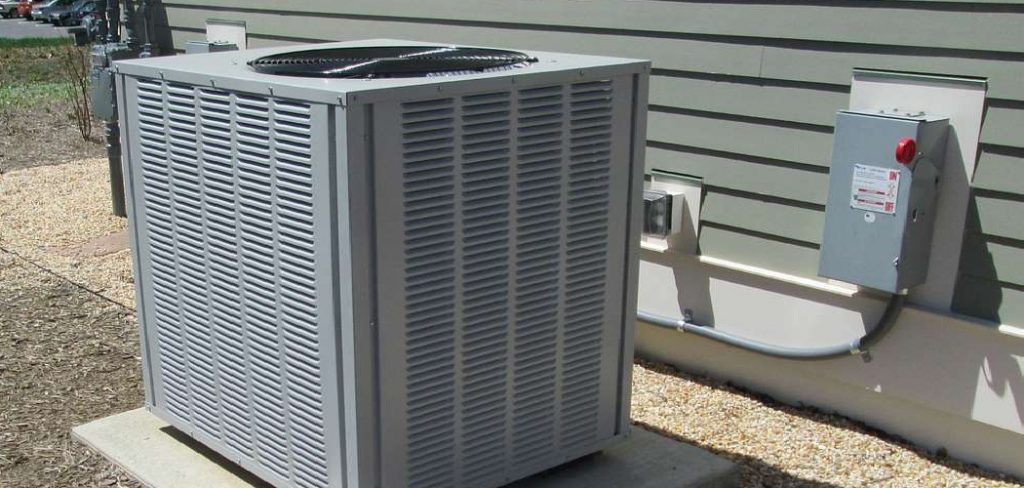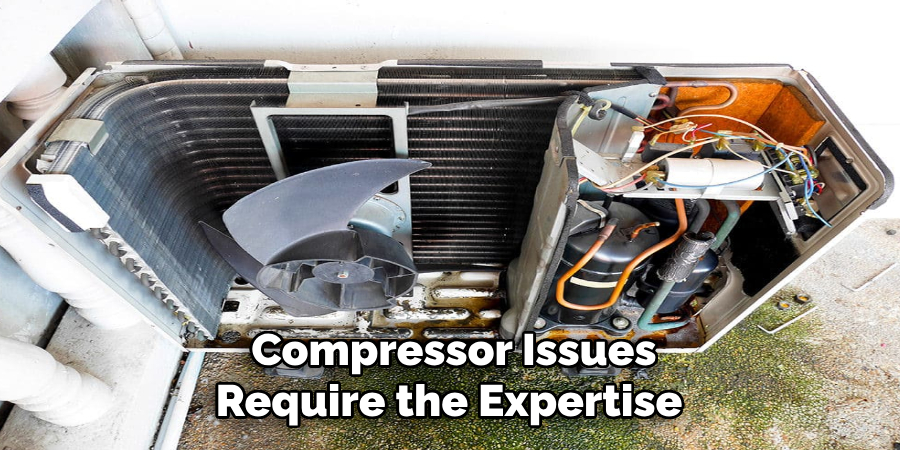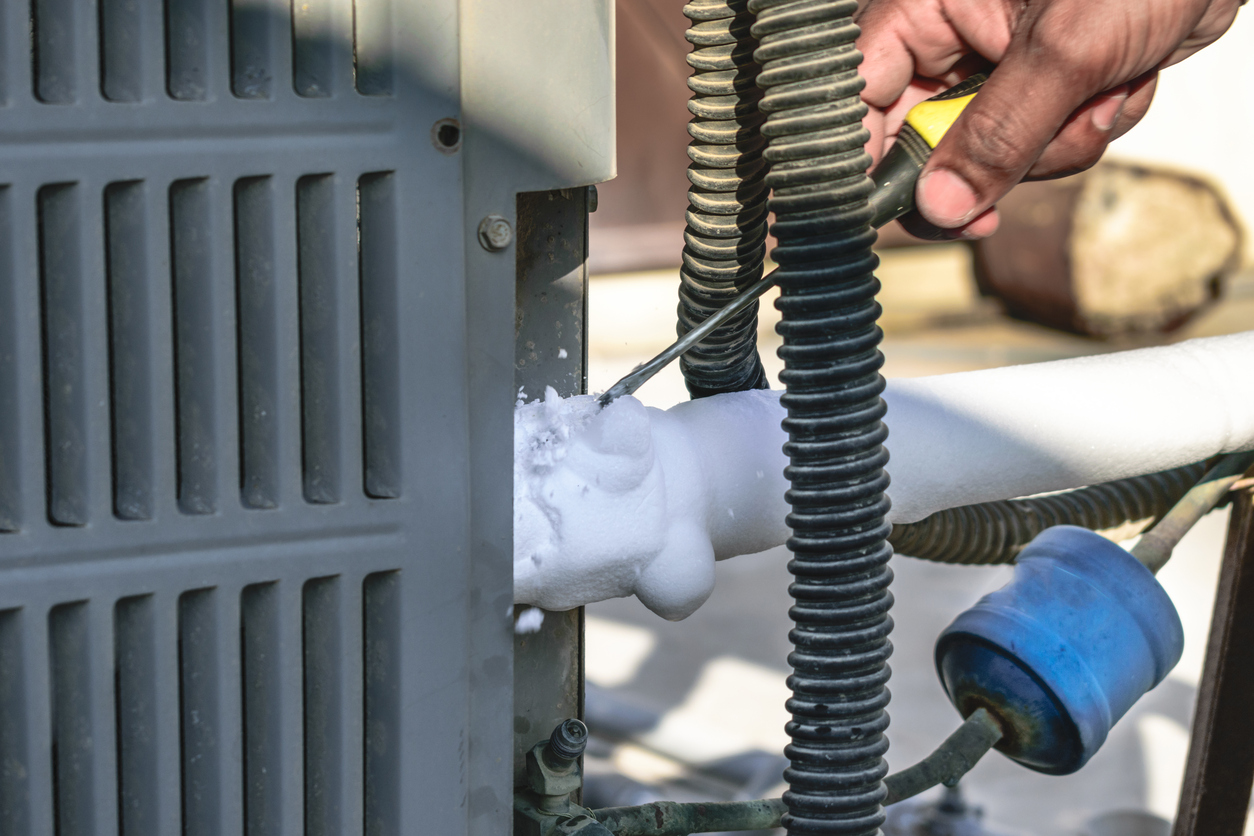How To Fix A Frozen Air Conditioner Coil

One of the most frustrating problems a homeowner can face, especially during the peak of summer or the dead of winter, is a frozen air conditioner coil. This issue not only stops your air conditioner from effectively cooling (or heating, in the case of a heat pump) your home, but it can also lead to more serious and costly repairs down the line. But don't panic! Often, a frozen coil isn't the sign of a catastrophic failure, and with a little know-how, you can often diagnose and even fix the problem yourself.
Understanding the Frozen Coil Problem
Before we dive into troubleshooting, it's important to understand why an air conditioner coil freezes. The evaporator coil, located either inside your indoor air handler or as part of your outdoor unit (depending on your system), is responsible for absorbing heat from your home. It does this by circulating refrigerant, a special chemical that gets very cold as it evaporates. When the coil gets too cold, moisture from the air condenses on it and freezes. This ice buildup acts as an insulator, further hindering the coil's ability to absorb heat and exacerbating the freezing process.
Several factors can contribute to a frozen coil, including:
- Restricted Airflow: This is the most common cause. A dirty air filter, blocked vents, or a malfunctioning blower fan can restrict the amount of air flowing over the coil, causing it to get too cold.
- Low Refrigerant: Low refrigerant levels reduce the pressure and temperature inside the coil, making it more prone to freezing.
- Dirty Coil: A dirty evaporator or condenser coil hinders heat transfer, leading to temperature imbalances and potential freezing.
- Outdoor Temperature: Running your air conditioner when the outdoor temperature is too low can cause the coil to freeze. Most AC units are not designed to operate efficiently below 60 degrees Fahrenheit.
- Mechanical Problems: A malfunctioning compressor or expansion valve can also contribute to a frozen coil.
Step-by-Step Troubleshooting Guide
Here's a methodical approach to diagnosing and potentially fixing a frozen air conditioner coil. Remember to always turn off the power to your AC unit at the breaker box before attempting any repairs.
Step 1: Initial Inspection (No Tools Required)
Start with a visual inspection. This simple step can often reveal the culprit.
- Check the Air Filter: This is the first and easiest thing to check. Remove your air filter and hold it up to the light. If you can't see light through it, it's likely dirty and needs to be replaced. A severely clogged filter is a prime suspect for restricted airflow. Replace the filter immediately with a new one of the correct size and MERV rating (check your system's manual or the old filter for this information).
- Inspect Indoor Vents: Ensure that all supply and return vents in your home are open and unobstructed. Blocked vents restrict airflow and can contribute to coil freezing. Make sure furniture, curtains, or rugs are not blocking airflow to any vents.
- Examine the Indoor Coil: If you can access the indoor coil (usually located inside your air handler or furnace), visually inspect it for ice buildup. You may need a flashlight to see clearly. Do not attempt to remove any panels without first turning off the power to the unit. If you see a thick layer of ice, it confirms that the coil is frozen.
- Check the Outdoor Unit: Examine the outdoor unit for any obvious signs of damage or debris blocking the condenser coil. Leaves, grass clippings, and other debris can restrict airflow.
Important Note: If you suspect a refrigerant leak (you smell a sweet, chemical odor near the unit or see oily residue), do not attempt any repairs yourself. Refrigerant leaks are hazardous and require professional attention.
Step 2: Defrosting the Coil (No Tools Required Initially)
If you've confirmed that the coil is frozen, the first step is to defrost it. There are a couple of ways to do this:
- Turn off the AC and Run the Fan: The simplest method is to turn off your air conditioner at the thermostat but leave the fan running. This will circulate warm air over the coil, gradually melting the ice. This process can take several hours, sometimes even up to 24 hours, depending on the severity of the ice buildup. Be patient. Place towels around the indoor unit to catch any water that drips as the ice melts.
- Use a Hair Dryer (With Extreme Caution): If you want to speed up the defrosting process, you can use a hair dryer on a low setting. However, exercise extreme caution. Never hold the hair dryer too close to the coil or any electrical components. Keep the hair dryer moving and avoid focusing on any one spot for too long. This method is best suited for smaller areas of ice buildup.
- Warm Water (Carefully): Another option is to gently pour warm (not hot!) water over the iced coil. Again, be very careful not to get water on any electrical components. Use a spray bottle for better control. This method can be effective, but it's also messy.
Important Safety Note: Never use sharp objects to chip away at the ice, as you could damage the delicate coil fins and cause a refrigerant leak.
Step 3: Further Inspection After Defrosting (Some Tools May Be Required)
Once the coil is completely defrosted, it's time to investigate further to determine the cause of the freezing.
- Clean the Evaporator Coil: After the coil is defrosted, inspect it closely. If it's visibly dirty, clean it. You can use a fin comb (available at most hardware stores) to gently straighten any bent fins. Then, use a vacuum cleaner with a brush attachment to remove any loose dirt and debris. You can also purchase a specialized coil cleaner spray from your local HVAC supply store. Always follow the manufacturer's instructions when using coil cleaner.
- Inspect the Blower Fan: Ensure the blower fan inside your air handler is operating correctly. You should feel a strong flow of air coming from the supply vents when the fan is running. If the airflow seems weak, the blower motor may be failing. You can usually access the blower motor by removing a panel on the air handler. Be sure to turn off the power before removing any panels. Listen for any unusual noises coming from the motor, such as squealing or grinding. If the motor is making strange noises or isn't running at all, it likely needs to be replaced. This repair is often best left to a professional.
- Check the Condenser Coil (Outdoor Unit): Visually inspect the condenser coil on the outdoor unit. Remove any leaves, grass clippings, or other debris blocking the coil. You can use a garden hose to gently rinse the coil, but be careful not to spray water directly into any electrical components.
- Multimeter Test on Capacitor (Requires a Multimeter & Caution): The capacitor starts the blower motor. A weak capacitor can result in reduced air flow. Locate the capacitor on the blower motor. Discharge the capacitor using an insulated screwdriver. Set your multimeter to measure capacitance. Disconnect the capacitor wires and attach the multimeter probes. If the reading is significantly lower than the capacitor's rating, replace the capacitor. **Warning: Capacitors store electricity and can deliver a dangerous shock even when the unit is off. If you're not comfortable working with electricity, call a professional.**
Step 4: Test Your AC System
After you've taken the necessary steps to defrost the coil and address any potential causes, it's time to test your AC system. Turn the power back on at the breaker box and set your thermostat to cool. Monitor the system for a few hours to see if the coil freezes again. If the coil freezes again quickly, it indicates a more serious underlying problem.
When to Call a Professional
While many frozen coil issues can be resolved with simple DIY troubleshooting, some problems require the expertise of a qualified HVAC technician. Here are some situations where you should call a professional:
- Low Refrigerant: If you suspect a refrigerant leak or low refrigerant levels, do not attempt to recharge the system yourself. Refrigerant is a controlled substance, and handling it requires specialized equipment and training. A professional can properly diagnose the leak, repair it, and recharge the system with the correct type and amount of refrigerant.
- Mechanical Problems: If you suspect a malfunctioning compressor, expansion valve, or other mechanical component, it's best to call a professional. These repairs often require specialized tools and expertise.
- Electrical Issues: If you're not comfortable working with electricity, leave any electrical repairs to a qualified electrician or HVAC technician.
- Persistent Freezing: If the coil continues to freeze despite your best efforts, it indicates a more complex problem that requires professional diagnosis and repair.
- Old System: If your AC system is old or nearing the end of its lifespan, it may be more cost-effective to replace it rather than invest in costly repairs. A professional can assess your system and provide you with options.
Preventative Maintenance
The best way to avoid a frozen coil is to perform regular preventative maintenance on your AC system. Here are some tips:
- Change Your Air Filter Regularly: This is the most important thing you can do. Check your filter monthly and replace it when it's dirty.
- Schedule Annual Maintenance: Have your AC system professionally inspected and serviced at least once a year. A technician can clean the coils, check refrigerant levels, and identify any potential problems before they become serious.
- Keep the Outdoor Unit Clear: Ensure that the outdoor unit is free of debris and that there is adequate clearance around it.
- Ensure Proper Airflow: Make sure that all supply and return vents are open and unobstructed.
By following these troubleshooting steps and performing regular maintenance, you can help prevent frozen coils and keep your AC system running smoothly and efficiently for years to come. Remember, when in doubt, always call a professional!










